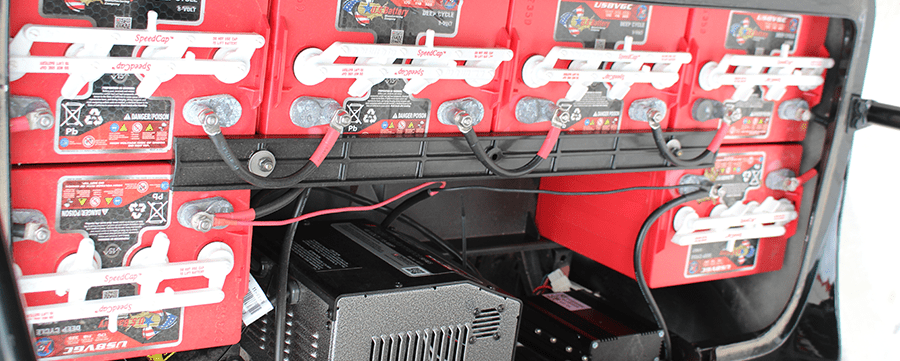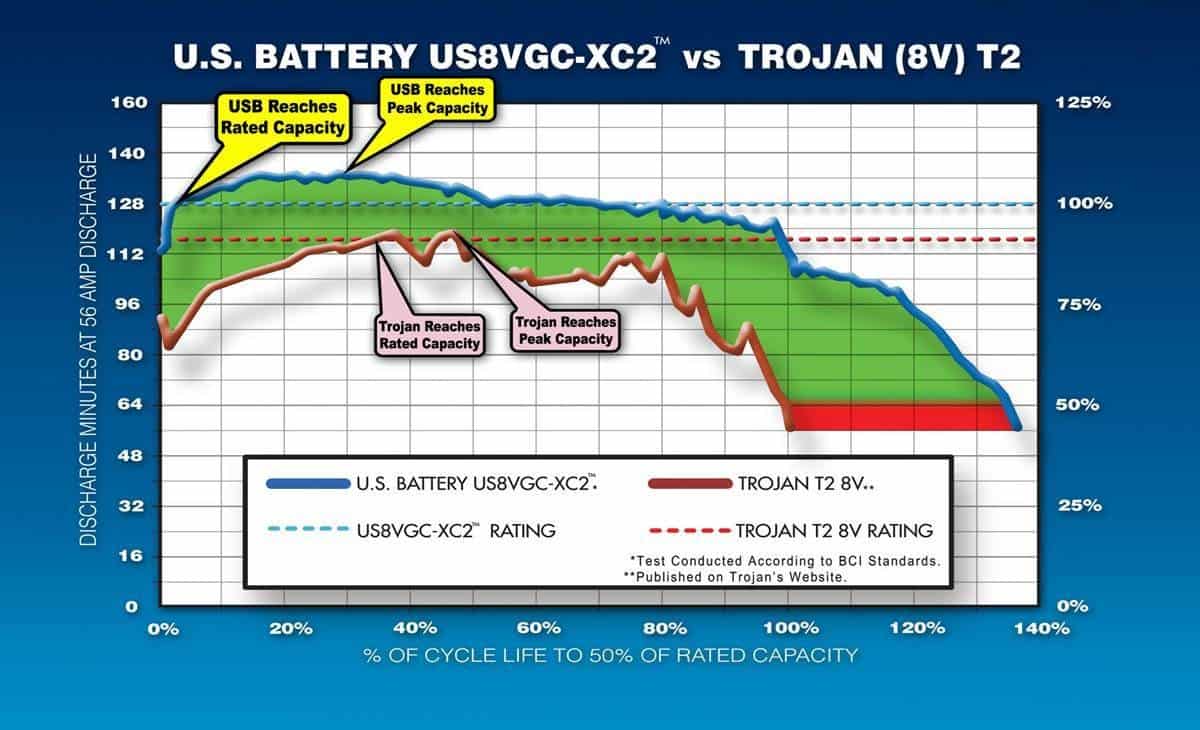Golf Cart Maintenance
BATTERY MAINTENANCE
- New batteries should be given a full charge before use.
- New deep cycle batteries need to be cycled several times before reaching full capacity (25-100 cycles, depending on type). Capacity will be limited during this period
- Battery cables should be intact, and the connectors kept tight at all times. Always use insulated tools to avoid shorting battery terminals. Regular inspection is recommended.
- Vent caps should be correctly installed and tight during vehicle operation and battery charging.
- Batteries should be kept clean and free of dirt and corrosion at all times.
- Batteries should always be watered after charging unless plates are exposed before charging. If exposed, plates should be covered by approximately 1/8? of electrolyte (add distilled water only). Check electrolyte level after charge. The electrolyte level should be kept 1/4? below the bottom of the fill well in the cell cover. Click Here to see proper fill level.
- Water used to replenish batteries should be distilled or treated not to exceed 200 T.D.S. (Total Dissolved Solids…parts per million). Particular care should be taken to avoid metallic contamination (iron).
- For best battery life, batteries should not be discharged below 80% of their rated capacity. Proper battery sizing will help avoid excessive discharge.
- Battery chargers should be matched to fully charge batteries in an eight hour period. Defective and unmatched chargers will damage batteries or severely reduce their performance.
- Avoid charging at temperatures above 120 degrees F or ambient, whichever is higher. Deep cycle batteries need to be equalized Equalizing is an extended, low current charge performed after the normal charge cycle. This extra charge helps keep all cells in balance. Actively used batteries should be equalized once per month. Manually timed charger should have the charge time extended approximately 3 hours. Automatically controlled charger should be unplugged and reconnected after completing a charge.
- In situations where multiple batteries are connected in series, parallel or series/parallel, replacement battery(s) should be of the same size, age and usage level as the companion batteries. Do not put a new battery into a pack which has 50 or more cycles. Either replace will all new or use a good used battery(s).
- Periodic battery testing is an important preventative maintenance procedure. Hydrometer readings of each cell (fully charged) gives an indication of balance and true charge level. Imbalance could mean the need for equalizing; is often a sign of improper charging or a bad cell. Voltage checks (open circuit, charged and discharged) can locate a bad battery or weak battery. Load testing will pick out a bad battery when other methods fail. A weak battery will cause premature failure of companion batteries.
- Always use a matched charger and battery pack system. Unmatched chargers will cause potential problems.
- As batteries age, their maintenance requirements change. This means longer charging time and/or higher finish rate (higher amperage at the end of the charge). Usually older batteries need to be watered more often…and their capacity decreases.
- Lead acid batteries should be brought up to full charge at the earliest opportunity. Avoid continuously operating batteries in a partially charged condition. This will shorten their life and reduce their capacity.
- Extreme temperatures can substantially affect battery performance and charging. Cold reduces battery capacity and retards charging. Heat increases water usage and can result in overcharging. Very high temperatures can cause “thermal run-away” which may lead to an explosion or fire. If extreme temperature is an unavoidable part of an application, consult a battery/charger specialist about ways to deal with the problem.
- Inactivity can be extremely harmful to all lead acid batteries. If season use is anticipated, we recommended the following:
- Completely charge the battery before storing.
- Remove all electrical connections from the battery, including series/parallel connectors.
- Store the battery in as cool a place as possible. However, do not store in a location which will consistently be below 32 degrees F. Batteries will discharge when stored, the lower the temperature the lower the self discharge.
- When not in use, boost every two months.






